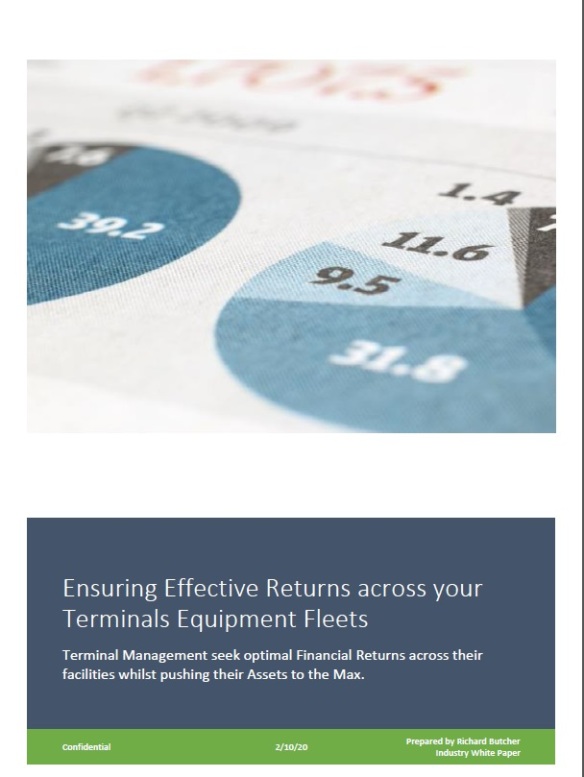Download white paper in pdf format:
.
Todays Challenges
Over the last few years I have written several Industry papers that have focused on the changing face of Container Terminals and the challenges that the management of these facilities have had to encounter. Today the biggest concerns for Management is financial pressure to reduce operational expenditure, deliver higher service levels and become masters in the way they plan and handle the next generation container vessels that call their facilities.
Terminal Management have relied heavily on several key elements to achieve these goals these have
included: –
. Terminal Operating Software – predictive data modelling on vessels, cargo flows, and
optimal scheduling of job and work orders allowing terminal work force to engage and
deliver against projected scheduling of vessel calls. Terminal Operating Solutions need to be flexible and adjust to changing conditions as Vessel and Yard Planning is fluid and can change but modelling can significantly help the Operational Teams predict trends.
. Terminals rely heavily on the performance of their Equipment Assets Deployed across their facilities, plans and scheduling are very reliant on the efficiencies of the machinery they have deployed.
. Workforce – although we are seeing a transition from Manually labour run facilities to semi and fully automated facilities -the work force still plays a key component in ensuring that the vessels are turned in the fast times whilst ensuring and maintaining the required Health and Safety requirements.
. Automation is being implemented across all areas of the Terminals Facilities to streamline and monitor every component of the daily operations.
So, the key to this paper is to evaluate the engineering and management of the terminals assets and the need to identify ways to maximize the way in which these assets are run and managed across the terminal.
Terminals Spend Billions on Machinery Annually
Terminals generate their revenue via their agreed THC rates, and these can vary significantly depending on the volumes and individual commercial agreements they have with their liner clientele. When you look at the breakdown on the THC rate the following elements will have to be embraced :-
. Terminal Infrastructure – 60 %
. Machinery Handling Equipment – 25 %
. Work Force / Management Costs – 10%
. Technology and Automation – 5 %
With Equipment being the 2nd largest capital expenditure for a terminal its critical that the Groups Engineering department can really focus on which manufacturer can deliver the most durable and cost-effective equipment available. When considering that equipment deployed will be in service for anywhere from 7 to 15 years and with terminals spending millions the question must be asked as to how to make the right decision and on what data is these judgements based on?
Read the complete document in English at: IOT ASSET TERMINAL MANAGEMENT WHITE PAPER – CNB FEB 2020 – RAB V1
For more information, please contact to:
Richard Butcher,
Executive Vice President Business Development,
CNB Tek Ltd,
Glenvale House,
57 Portchester Road,
Fareham PO16 8AL,
Hampshire United Kingdom.
Email :- <mailto:richard@cnbtek.com> richard@cnbtek.com
UK Cell – +44 (0) 750 3337188
Skype :- richardbutcher2020
=============================
Tags:
IOT Tracking of Your Engineering Assets Across the Container Terminal (gz39),
If you want to post this post on your own site, you can do it without problems, as long as you do not modify it and cite as a source to https://gruasytransportes.wordpress.com
Remember to subscribe to our blog via RSS or Email.
Follow us on Twitter at @gruastransporte
Follow us on http://www.facebook.com/blogdegruasytransportes/

Comments
Post a Comment